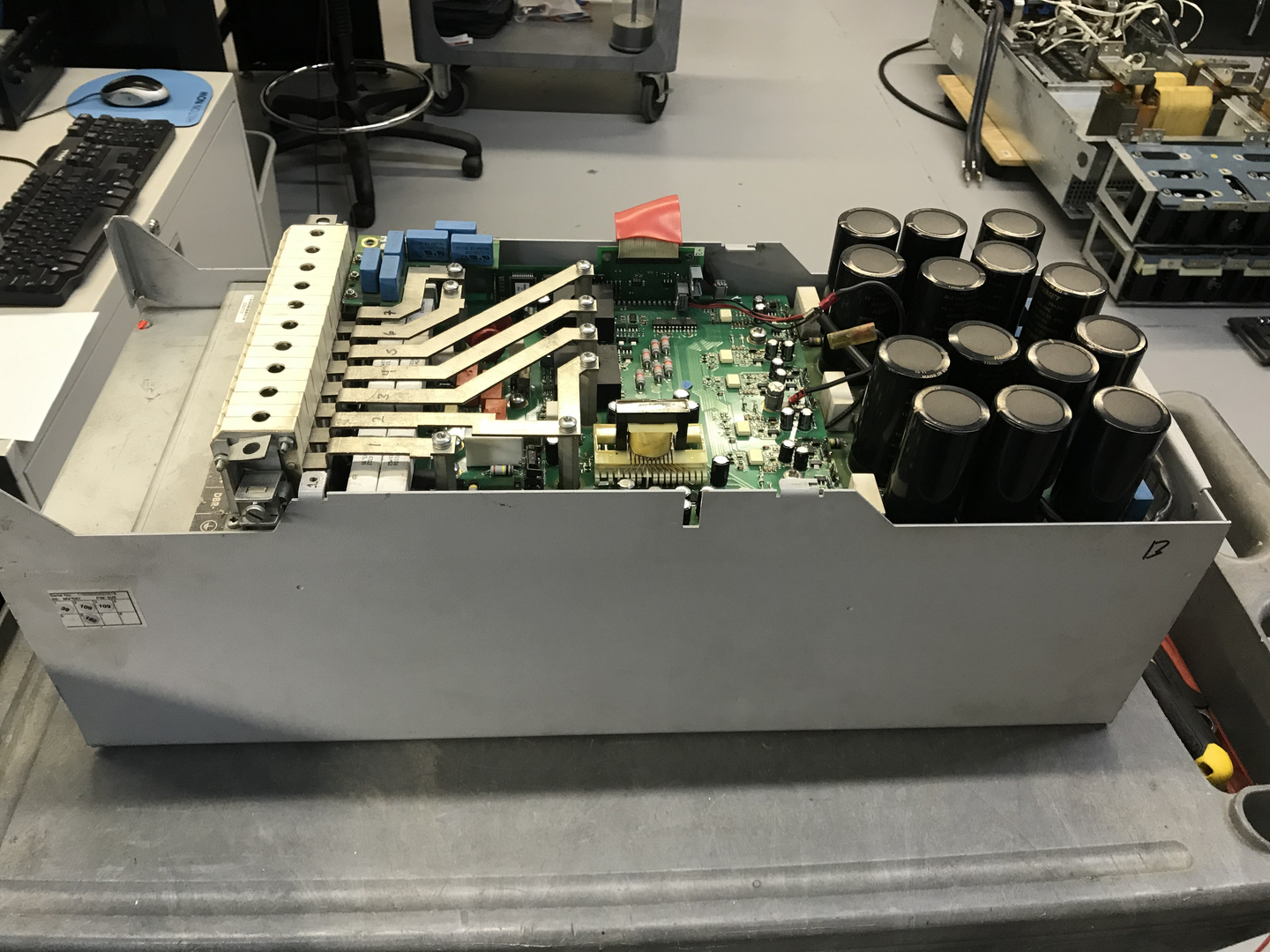
Variable Frequency Drive (VFD) Repair Process
Variable Frequency Drive (VFD / AC Drive / Servo) repair should start with checking the right connection of electric motor connections and drive terminal connections. Drive output which is Motor and drive input that is incoming power connections can be missed, installed loosely or wired to the incorrect terminals, so checking all connections is recommended before pulling the drive for a repair evaluation.
Load cycles and mechanical vibration during running can lead to sub-standard connections or say loose connection. Loose connections eventually lead to arcing & spark. Arcing at the drive input terminal can result in over voltage faults, clearing of input fuses, or damage to protective components. Sparking / Arcing at the drive input (L1,L2,L3) ,Output terminals (U,V W) or DC point (DC+ & DC-) may result in over-current faults or damage to the power components like rectifier unit & IGBT Unit. Loose connections can cause minor stoppages or erratic operation. For example, a loose START/STOP signal wire can cause uncontrollable starting and stopping of the motor. A loose speed reference wire can cause the drive speed to fluctuate, resulting in scrap, machine damage, and personnel injury.
Rectifier and IGBT Module Testing
Prior to applying power during the Variable Frequency Drive repair, the input and output power sections are tested. If there is a short on the input side or output side of the drive, further damage can be caused to the unit if power is applied to it. For this reason, special meters should be used to properly test the input and output power sections of the drive prior to applying power to the drive unit. If a short is found, the drive can be disassembled and the cause of the short can be diagnosed and quoted for repair. If the drive repairs are too costly, drive replacement should be considered.
Power Up
If the input and output power sections test healthy during the Variable Frequency Drive repair process, power can be applied to the drive to perform amp reading and output frequency testing. Slowly increasing the power voltage during this step of the drive repairs process is suggested to gather accurate meter readings and to protect the motor. The power voltage is slowly increased on the drive until the rated input voltage of the drive is reached. Depending on whether or not the drive provides a display will determine what further action will be taken. If display is unavailable, disassemble and diagnosis of the internal power supply of the control section of the drive is necessary to further evaluate cause of failure and establish cost and lead time of the drive repairs.
Motor Testing
If the previous three tests have passed during the Variable Frequency Drive repair process, a basic JOG/ RUN function of the drive can be performed with a simple template program. When a drive comes into our facility, repair techs will backup all existing programs stored in the drive prior to installing a test template program for testing. Backing up the drive program ensures that we have a backup copy of the program to install after the repair is complete. The best method for backing up drive programs will depend on the series and model of drive that’s being repaired. After the drive programs have been backed up, the drive is reset to factory default through the keypad and then recommissioned to a basic START / STOP function of the drive connected to its motor.
Closed loop testing will be necessary when an encoder or tachometer is involved. If the motor will not run, the output voltages and motor current ratings are tested to verify that the drive is functioning properly to rotate the motor.
Safety Precautions
Manufacturers are encouraged to ensure that their Variable Frequency Drive repair are being performed at the actual site of whoever is offering the service. Drive repairs should be taken with extreme caution and only be performed by technicians who have required training and experience to work with electrical equipment. Baiza Automation strongly recommends to consult an expert in the field when repairing all industrial electrical equipment. Many drive controllers have an internal DC bus that retains a charge after power has been cut to the drive, and as a result, electrical current is still present after power is shut down. Technicians performing VFD repairs must always take extra precautions to ensure proper safety measures are taken, or injury or even death may occur.
Baiza Automation receives Variable Frequency Drive repair everyday from companies. For Variable Frequency Drive repairs and replacement, contact Baiza Automation.

